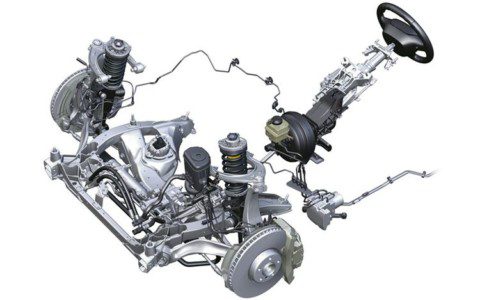
BMW Active Steering
Help the driver when cornering without depriving him of the ability to control the steering wheel. In short, this is Active Steering developed by BMW. A revolutionary new driving system that sets new standards for agility, comfort and safety in the name of the traditional driving pleasure typical of the Bavarian brand.
The new steering system will allow future BMW car users to experience it both at high speeds on motorways and suburban routes, as well as during parking maneuvers, during which the driver perceives the system better.
Genuine steering response, says BMW, will make driving more dynamic, enhance onboard comfort and significantly improve safety, as active steering is the perfect complement to Dynamic Stability Control (DSC).
Active steering, in contrast to so-called "steering" systems without a mechanical link between the steering wheel and the wheels, ensures that the steering system remains operational even in the event of a failure or malfunction of the driving assistance systems.
Active steering provides better handling, guaranteeing agility even in corners. Electrically Controlled Active Steering provides adjustable steering drop and assist. Its main element is a planetary gearbox built into the steering column, with the help of which the electric motor provides a larger or smaller angle of rotation of the front wheels with the same rotation of the steering wheel. The steering gear is very straight at low to medium speeds; for example, only two wheel turns are sufficient for parking. As the speed increases, Active Steering decreases the steering angle, making the descent more indirect.
BMW is the first manufacturer in the world to decide to implement active steering as the next step towards a pure concept of “steering by wire”. Easier maneuvering and less risk during emergency manoeuvres. The core element of the revolutionary active steering system is the so-called “overlap steering mechanism”. This is a planetary differential built into the split steering column, which is driven by an electric motor (through a self-locking screw mechanism) that increases or decreases the steering angle set by the driver depending on various driving conditions. Another important component is variable power steering (reminiscent of the better-known servotronic), which can control the amount of force the driver applies to the steering wheel while steering. At low speeds, active steering changes the relationship between steering and wheels, making it easier to manoeuvre.
On suburban routes, active steering will be appreciated more due to the more direct gear ratio compared to other conventional systems, which gives the vehicle more agile responsiveness. At higher speeds, gear ratios will become increasingly indirect, increasing the effort required at the wheel and preventing unwanted movements.
Active Steering is also very helpful in critical stability situations such as driving on wet and slippery surfaces or strong crosswinds. The device fires at impressive speed, improving the vehicle's dynamic stability and thus reducing the frequency of DSC triggering. Last but not least, the contribution is made at very low speeds, for example during parking maneuvers. In this case, a very direct steering ratio would require the driver to make only two turns of the steering wheel to park in a confined space without any problems and without much physical effort.
